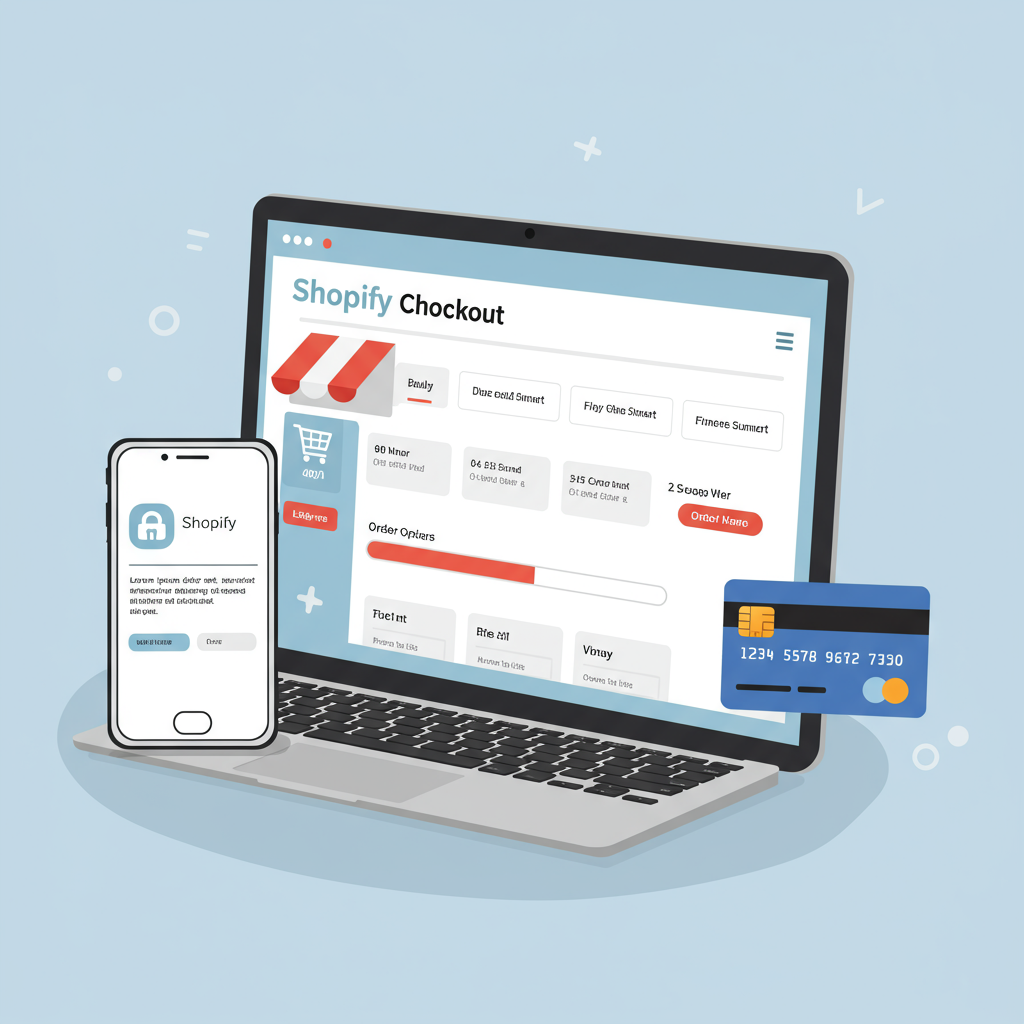Unlock the secrets to a seamless and high-converting Shopify checkout experience for your customers.
As a merchant, I’ve learned that the checkout process isn’t just the final step in a customer’s journey; it’s often the most critical. It’s where all your marketing efforts, product quality, and brand building either pay off or fall flat.
I’ve spent countless hours analyzing abandoned carts and customer feedback, and what I’ve consistently found is that a clunky, confusing, or slow checkout is a conversion killer. My goal with this guide is to share the strategies I’ve implemented to turn those potential losses into successful sales on Shopify.
Think of your checkout as the finish line of a marathon. Your customers have navigated your store, found what they want, and are ready to commit. Any friction at this stage can cause them to stumble and abandon their cart, leaving you with a missed opportunity.
The first, and arguably most crucial, improvement I always focus on is speed. In today’s fast-paced digital world, customers expect instant gratification. A slow-loading checkout page is a sure-fire way to lose them, even if they’re highly motivated.
I regularly audit my Shopify store’s performance, paying close attention to page load times, especially on the cart and checkout pages. Tools like Google PageSpeed Insights or GTmetrix are invaluable for identifying bottlenecks.
Optimizing images, deferring non-critical JavaScript, and leveraging browser caching are technical steps I take to ensure my checkout loads as quickly as possible. Every millisecond counts when a customer is ready to pay.
Next, I strive for simplicity. While Shopify’s default checkout is quite streamlined, I always look for ways to minimize the number of steps or fields a customer needs to complete. The less effort required, the better.
Offering a guest checkout option is non-negotiable for me. Forcing customers to create an account before purchasing adds unnecessary friction and can deter first-time buyers. I always make it easy for them to proceed without logging in.
Clear progress indicators are also vital. I ensure my customers always know exactly where they are in the checkout flow – whether it’s ‘Information,’ ‘Shipping,’ or ‘Payment.’ This transparency reduces anxiety and keeps them moving forward.
Given that a significant portion of online shopping now happens on mobile devices, optimizing the checkout for smartphones and tablets is paramount. I ensure my Shopify theme is fully responsive, and I test the checkout experience on various devices.
This means large, tappable buttons, easily readable fonts, and forms that are simple to fill out using a mobile keyboard. I avoid tiny text or cramped layouts that frustrate users on smaller screens.
Building trust is another cornerstone of my checkout strategy. Customers are sharing sensitive financial information, so they need to feel secure. I prominently display security badges, like SSL certificates or trusted payment provider logos.
I also leverage social proof by subtly integrating customer reviews or testimonials, especially for products in their cart, if the theme allows. This reinforces their purchase decision and builds confidence in my brand.
Transparency in pricing is absolutely essential. I make sure there are no hidden fees or surprises when customers reach the final payment step. The price they see in their cart should be the price they pay.
This includes clearly displaying shipping costs upfront, ideally before they even enter the checkout. Unexpected shipping fees are one of the leading causes of cart abandonment, and I work hard to avoid that shock.
Offering a wide array of payment options is crucial for catering to diverse customer preferences. I ensure my Shopify store supports major credit cards, PayPal, and accelerated checkouts like Shop Pay, Apple Pay, and Google Pay.
Depending on my target audience, I also consider integrating local payment methods specific to certain regions. The more convenient the payment process, the higher the conversion rate.
Effective error handling is often overlooked but incredibly important. If a customer makes a mistake, I ensure the error messages are clear, concise, and helpful, guiding them on how to correct the issue rather than just stating ‘Error.’
I also implement real-time form field validation where possible. This means if a customer types an invalid email format, they get immediate feedback, preventing them from proceeding with incorrect information.
Utilizing features like address auto-fill or postcode lookup significantly speeds up the data entry process. I find these small conveniences make a big difference in the overall user experience.
A clear and concise order summary is vital. Before they click ‘Pay Now,’ customers want to quickly review their items, quantities, prices, and shipping details. I ensure this summary is easily visible and accurate.
While I’m cautious not to overwhelm the customer, I sometimes strategically place a small, relevant upsell or cross-sell on the cart page or even the order confirmation page. The key is to make it genuinely helpful and not intrusive.
The experience doesn’t end with the payment. I focus on the post-purchase experience too. A well-designed order confirmation page and timely, informative email updates build loyalty and encourage repeat business.
I’m a big believer in A/B testing. I regularly experiment with different layouts, button colors, text variations, and even the number of checkout steps to see what resonates best with my audience and drives higher conversions.
Monitoring my Shopify analytics, especially conversion rates at each stage of the checkout funnel, is a continuous process. This data-driven approach helps me identify new areas for improvement and validate my changes.
What are your thoughts on these strategies? Have you implemented any of these, or do you have other tips that have significantly improved your Shopify checkout experience?
In conclusion, optimizing your Shopify checkout UX is not a one-time task; it’s an ongoing commitment to your customers. By focusing on speed, simplicity, trust, and convenience, you can significantly reduce abandoned carts and boost your sales.
I encourage every Shopify merchant to regularly review their checkout process from a customer’s perspective. Small tweaks can lead to substantial gains, transforming your store into a conversion powerhouse.






